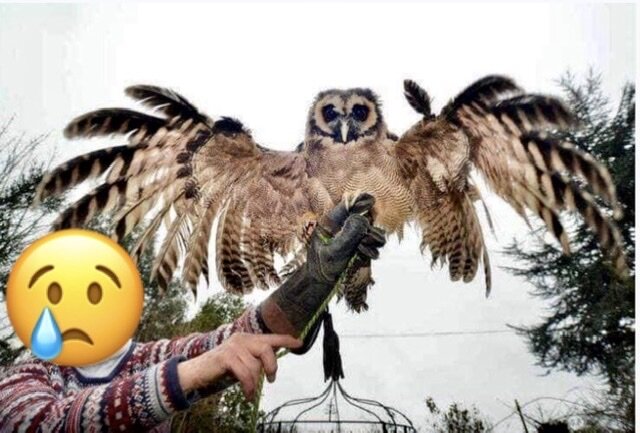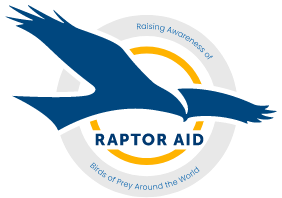Rescues and raptors...........
It’s pretty miserable outside so I’m sat in my kitchen writing another blog which is a novel thing, they are like buses now, nothing for months and now two in short succession....... Thank me later!
Those of you who have followed Raptor Aid for a while will remember that at one point we were making a conscious effort to try and tidy up many public bird of prey displays and rescue’s showing bad practice, poor husbandry creating welfare issues, questionable ways of using the birds to make money and just generally showing birds of prey in a bad light. Since one blog (Poke & Stroke - Its not cool, 2017) which was possibly our most read blog post to date we have took our foot off the gas a bit with this side of things and it has led to a few people asking why?
The honest answer is time, when we became a charity I had to think what do we really want to achieve with the time I can commit to the charity. It quickly became apparent that fighting legislation and councils over this topic, contacting organisations with poor welfare standards to offer advice and support was something I could spend my whole time doing and although it might work in some instances I would have to neglect the conservation aspect of Raptor Aid. So I made a choice that conservation would come first and captive birds of prey would take a back seat for now.
Just over a year ago a new piece of legislation did come into force, the Animal Activities Licence 2018, which covers anyone using birds of prey commercially and means they should apply and gain this licence should they carry out commercial activities earning over £1000 per annum (It covers other animals not just raptors). I had hoped this would bring many organisations into line and councils although stretched would have more powers to help raise standards. I still think its early days for this legislation and I know the level of application across counties and regions vary’s drastically but hopefully over the next 5 years we will see an improvement.
That’s doesn’t solve the problem completely though! The reason I have decided to write this blog is because of an image circulating social media at the moment which has ignited my interest in the subject again. This image is of a bird of prey rescue using owls on public display to raise funds, I presume for the upkeep of their birds which have come to them as rescue cases but this isn’t always the case.

So if I just start with the image, to the general public this may look like an acceptable image but unfortunately its not and the first thing that should stand out is the awful feather condition of this bird. As most of you reading this will appreciate feathers are crucial to a bird such as this Asian brown wood owl not just for flight but also insulation and protection. This will be a captive bred bird as its not one of our British species but that doesn’t mean its not a rescue, a picture doesn’t tell you the story of this individual owl, it may have come to the rescue like this. If this bird did come in this condition it certainly shouldn’t be used in public display, this bird should have access to a suitable sized aviary to moult out, grow new feathers and then it can be assessed as to its suitability for public display (Wild rescue birds should never be used in public displays).
There are further images of this rescue using birds on display which equally do not portray the birds in a safe and professional manner. I looked past these emotive images for a second and did a little bit of research into who runs this rescue and it appears to be an elderly couple who according to one post have been rescuing birds of prey for 23 years. In the UK there is no legislation directly governing the rescue of wild and captive animals meaning that you could start rescuing hedgehogs, pigeons, owls or foxes tomorrow and rehabilitating them yourself with no prior training in principle (Of course there are wildlife and veterinary laws that must be adhered to). This couple I don’t know from Adam but I imagine they started this rescue with intentions of doing some good in the world and in particular for birds of prey. I’ve seen it before where this can snowball and in various circumstances people become over burdened and get snowed under with animals, standards slip or don’t even start out that high through lack of training and knowledge and in the end the rescued animals suffer and need to be rescued from the rescuer.
In the comments on social media regarding this one image there has been a lot of anger towards this rescue by people who have a background and knowledge in keeping birds of prey in captivity, there arguments are varied and reasons for voicing an opinion equally varied. These opinions can include wanting to protect the image of keeping of birds of prey in captivity, protect the sport of falconry, concerns over the welfare of the birds being used, anger towards the owners of this rescue and other commercial businesses operating in the same field of public displays. I can understand many of these concerns but not one person in the comments at the time of writing this has offered help or a solution.
What is the solution? My personal view is that those who keep birds of prey in captivity whether it as a falconer, general enthusiast, commercial enterprise and at whatever standard need to come together and formulate a way of working together. Unfortunately I feel that means including the organisations deemed to be of poor standards, I’m a massive believer that you are only as strong as your weakest link. The root of this problem has to be with the breeding of birds of prey in captivity In the UK, this may upset some people, but many of the owls and other birds of prey owned by rescues and organisations are the ones that didn’t make the grade (Subjective), bought as pets and then the novelty wore off or used as a stepping stone to another species. Anyone of us can buy a pair of Barn owls or Eagle owl Sp. and breed them in the back garden in nothing more than a garden shed and they will breed!! I ran a study monitoring UK bird of prey for sale pages over a 6 month period and it was shocking the number of individual birds of prey being offered for sale each month over 12 months of age (I may share the findings one day). The reasons for why the bird was for sale when given was also recorded and made for equally depressing reading. This open unregulated breeding of birds of prey is the root of the problem in my eyes.
Regulate the breeding of birds of prey in the UK and possibly put a quota on the numbers of certain species being bred and we might start to see less of a need for rescues and sanctuary’s. If this organisation closes down who is going to step up and care for the Eurasian eagle owl with a life expectancy of 40-50 years or the 6 Tawny owls that have a life expectancy greater than your dog. The welfare needs to improve with many rescues but it should be done in a supportive way because if not the captive bird of prey community needs to be ready for the fall out if bird of prey rescues start getting shut down or their financial revenues are cut off.
What is Raptor Aid going to do? Well as I write this I am trying to find out contact details of the organisation who own the owl in the image and I’m going try and make contact and offer some support and assistance. We don’t have all the answers and we certainly don’t intend on throwing money at this problem but a little bit of communication and support might go some way to giving these birds a better life.
What can you do? Well if you’re a bird of prey enthusiast/keeper, falconer or bird of prey business put down your social media pitch forks and come together in a way that will help and support organisations that for all we know may have started with all the best intentions and got in to deep. If you are the general public reading this blog try and engage common sense when around public bird of prey displays, don’t be afraid to ask questions if you have concerns and if you need help you can also contact Raptor Aid for advice. We have developed some advice sheets on our download pages to assist schools and venues on what to expect from anyone offering commercial bird of prey services. They can be found here.
Yours in raptors,
Jimmi
Raptor Aid CIO

